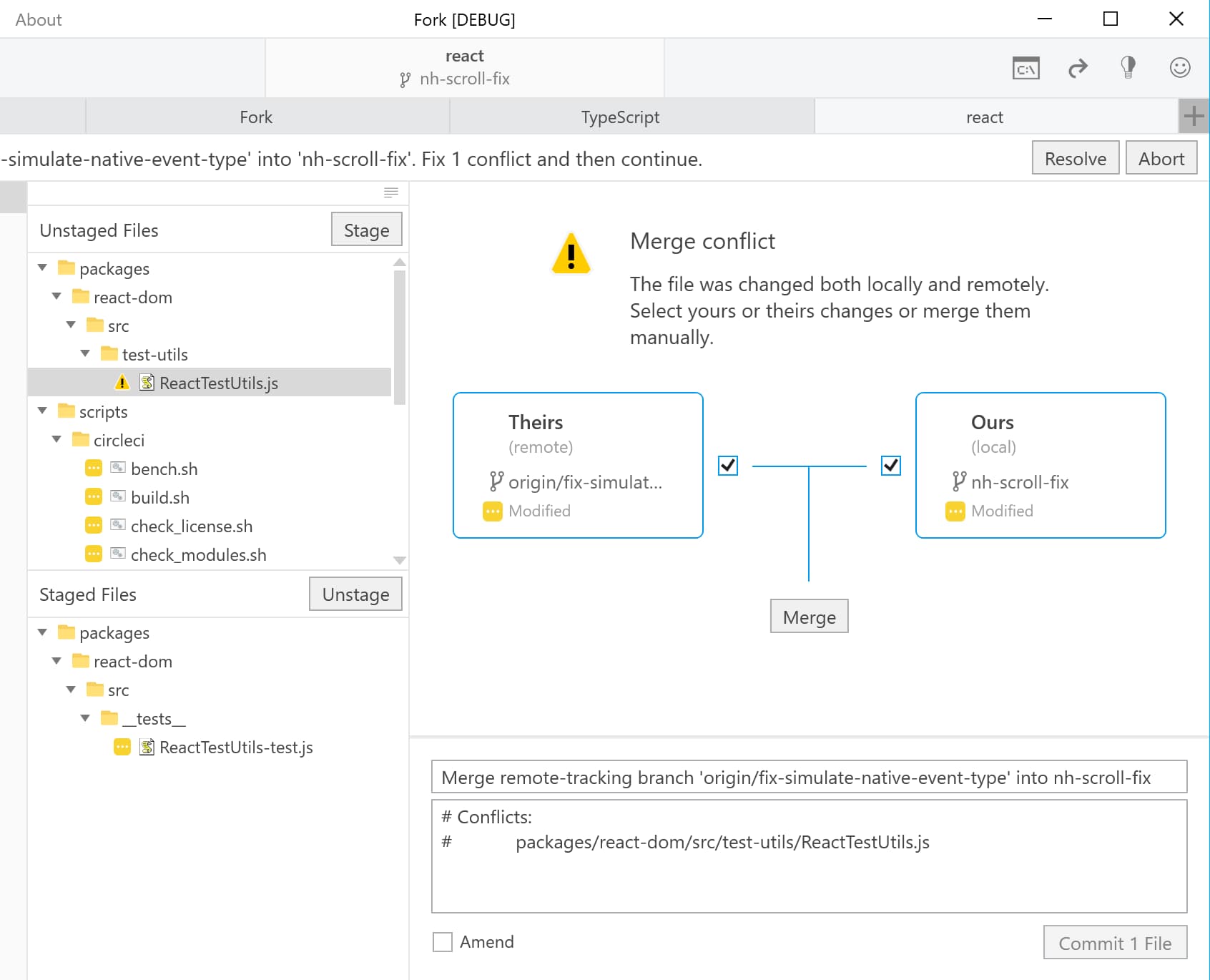Fork Git Client Source
To recap, the Forking Workflow is commonly used in public open-source projects. Forking is a git clone operation executed on a server copy of a projects repo. A Forking Workflow is often used in conjunction with a Git hosting service like Bitbucket. A high-level example of a Forking Workflow is. Sites such as GitHub, Bitbucket and Launchpad provide free DVCS hosting expressly supporting independent branches, such that the technical, social and financial barriers to forking a source code repository are massively reduced, and GitHub uses 'fork' as. Git forking through GitHub is a process that is isolated to GitHub. This means that whenever a git fork happens, the repository and the code remains confined to the user’s GitHub account. There is no effect on the local machine of the user or the involvement of Git in the process. Before you create a Git repository, you’ll want to create a project folder in your source directory. Once you have a folder in your source directory, you can click on File then Create new repository in Fork to create your Git directory. To check whether the Git repository is created, you can open up the project folder and check for a.git folder.
jarednielsen.com
February 25, 2019
Whether you are working with open-source or private repositories, you will want to learn the Git fork and pull request workflow. The biggest difference between a Git fork and pull request workflow and a Git branch workflow is that in forking you are working on your own copy of the project and not within the project. You push changes to your fork without changing the original project and then propose changes to the original project via pull requests.
This is the final tutorial in a series. If you’re just joining us, you may want to:
Learn Git Fork & Pull Request Workflow: Real World Example
This blog is built with GatsbyJS, which is a fantastic React-based static site generator, but still very much in development. By default, GatsbyJS generates an excerpt from the first x number of characters in your post, which is not always ideal:
A feature I wanted was the ability to add custom meta descriptions for SEO and Open Graph:
This tutorial will walk you through the steps I took to implement this functionality in my blog and open a pull request on the GatsbyJS repository. You can view the PR at https://github.com/gatsbyjs/gatsby/pull/11936
Fork the Repository
Navigate to the repository you want to fork. If this is your first fork, congrats! Hit the Fork button in the upper right. You will be treated to a delightful animation and redirected back to your account. Note that now the repository is prepended with your username, with a link pointing to the source of the fork just below it.
Now clone your fork.
Add Upstream
When working with a forked repository, you will want and need to pull changes from the original repo to keep your fork up-to-date. If the original repository is “the source”, then, to use a water-based analogy, we could say that it is “upstream”, which is what we’ll do:
When you work on the project in the future, simply checkout master and fetch and merge upstream.

Get to Work: Checkout a Branch
When working on a fork to which you intend to create pull requests, you will want to keep the master branch up-to-date and separate from the work you are doing in order to mirror the upstream and minimize conflicts. In this example, I created a branch meta-description as that was the feature I was implementing:
Work on your feature or bug fix, then add, commit and push to your remote origin.
Fork Git Client Github
When submitting a pull request, you won’t push directly to the upstream. Instead, you will push your branch to your remote fork and from there open a PR.
Opening a Pull Request
After pushing your branch to your remote origin, navigate back to your fork of the repository on GitHub. You should be presented with a notification reporting the title of your recently pushed branch and a GitHub green button to Compare & pull request.
Click that button and you will be routed to a new page on the upstream repository with a form to enter a title and a description for your pull request. Note that your commit message will be auto-populated in the title field, but you can change it.
Also note the diff below the form to review your file changes before submitting your PR, which I recommend you do to ensure no errata found its way into your commit.
Git Fork Free
Write a descriptive title and a brief, articulate explanation of the pull request.
Click Create Pull Request and your pull request will be added to the queue. You can always return to your PR to edit its title and description. And, if after submitting, you need to make an edit to the PR, just add, commit and push the changes to your fork origin and they will automatically be updated in the upstream.
Git Client For Windows
(Re)Sources
Best Git Client For Windows
Want to level up your problem solving skills? I write a weekly newsletter about programming, problem solving and lifelong learning.Join now